New Orleans - The "Big Easy”
Sunday 7th May (Pirates, Gators and Fun-Creators).

After a good night”s rest in my hotel room which came with a seating area large enough to play basketball in, I set out to get a hearty breakfast. Here is the south, the staple food is corn bread, gravy and grits and while I very much enjoyed the first delicacy, the other two did not tickle my palate in ny way. So I wasted little time before I was once again on the trail of history and as I was about to discover, there is a lot this city has to offer in that respect.
My first excursion took me near the wharf of New Orleans into what today is known as the Vieux Carre or French Quarter. There our guide was eagerly awaiting to the arrival of the tour”s participants. Suitably attired as a pirate from the turn of the 1800s, our guide Todd filled us in on the goings on in the bustling southern metropolis.
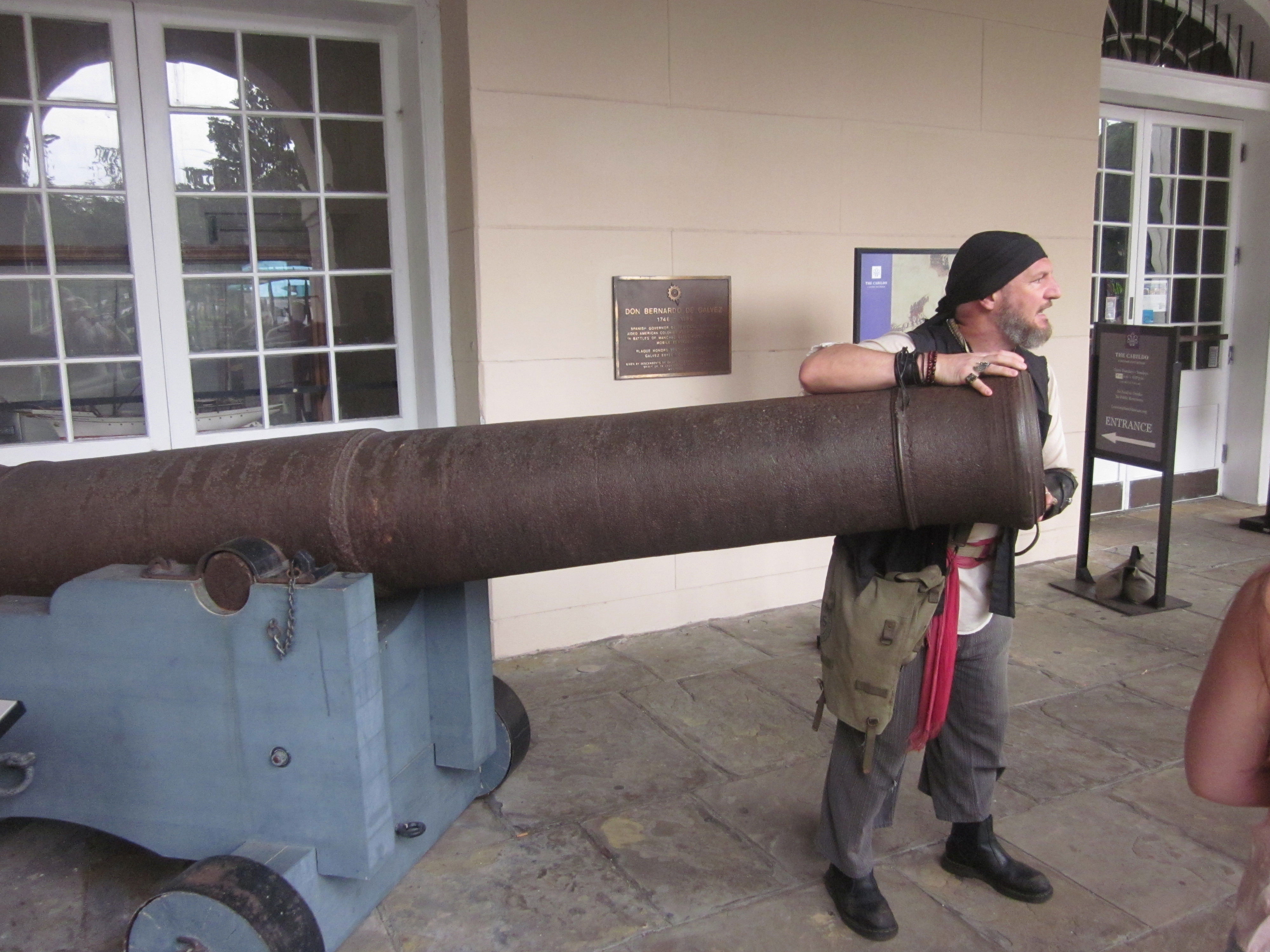
It is true to say that New Orlean would not be what it is today without its proximity to the Mississippi River. However, it took a Frenchman, Jean-Baptiste Le Mohne de Bienville to recognise its strategic value when he was commissioned to establish a French settlement on the banks of the river in 1718. In spite of this, the city of Nouvelle Orleans would soon come under the control of the Spanish and renamed Nuevo Orleans when it was acquired in a land deal with the Spanish crown. It would remain under their rule until it was sold back to the French in a secret arrangement at the turn of the 19th century. The terms of the agreement stipulated that the land should not be sold off subsequently. These terms were promptly broken by the so-called “Louisiana Purchase” of 1803 which sold the land to the newly formed United States.
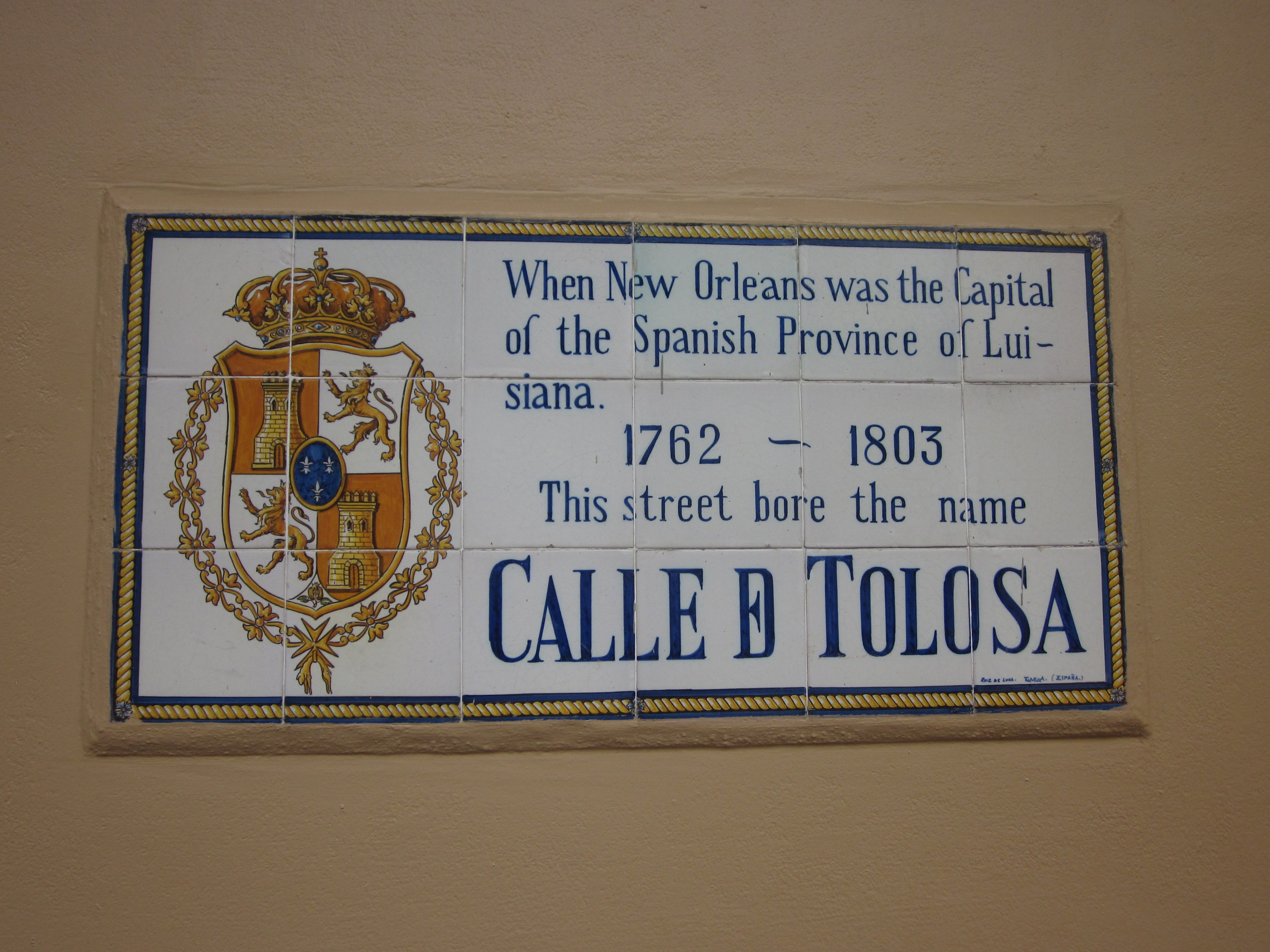
It’s trade in cotton, gin, sugar and other sought after commodities quickly established New Orleans as a major trading hub not just to the Caribbean to the south, but also Mexico and Texas to the West and the Carolinas and Boston to the East and the North respectively. While much of the newly founded United States had suffered greatly following the aftermath of the War of Independence, the economy in the city was booming. However, by becoming part of the United States, the city became subject to the Embargo Act of 1807 which was intended to inhibit trade with the United Kingdom. This was not good for the merchants of the city who relied on the flow of goods to and from the Caribbean and further away. The solution came from a seemingly unlikely source, two Haitian-born brothers Pierre and Jean Lafitte.
The Lafittes were, not to mince words “pirates”; rum-drinking, fist-fighting and ship boarding sea rats who made their wealth profiting from the sale of goods “liberated” from ships sailing in the Atlantic and Caribbean alike. Though brothers, they were very different. Pierre was the brawler, the hard nut but also the mast strategist and thinker of the pair, yet history has attributed much of his achievements to his brother Jean. Perhaps this is because unlike Pierre, Jean was cultured, well spoken and fluent in several languages speaking his native French, English and Spanish) which allowed the Lafittes to bring under their command the various groups of pirates operating in the areas around New Orleans. However, the Lafitte not only gathered all these men under one banner, they also found and established a unified pirate colony near the city, calling it Barataria and using it to circumvent the trade embargo imposed by the colonial governor William Claiborne.
Once more merchants could replenish their stores with goods acquired from Lafitte and his pirate allies. Local merchants profited further because the pirates would spend their ill-gotten gains in the local taverns and whore houses, so that the arrangement became mutually beneficial. In spite of several attempts to curb the pirates activities, things continued on for years like this until the so-called War of 1812 between the resurgent United Kingdom and the United States in which the Lafittes would play a pivotal role and yet none would have predicted this turn of events.
By 1812, the pirates of Barataria had become an established part of New Orleans life and trade. Whenever one of them was arrested for fighting or brawling, they would land in the Calaboose or city jail and either be released by the next morning or some palms would be greased to effect their release equally as quick. Pierre und Jean would also find their way into the local lock-up on many an occasion and be out before the territorial governor knew what was happening.
On the last such occasion, Claiborne heard of the incarceration of Pierre before he could be “released” and he wasted no time, posting a squad of trusted men around the jail to keep Pierre locked up. He was determined to make an example of Pierre, expecting this would force Jean”s hand, forcing him to surrender himself to the authority of the governor to save his brother from the hangman”s rope. However, to everyone”s surprise Jean did nothing, at least not at first, though he let it be known that any harm coming to his brother would have dire consequences. It was effectively a stalemate. Pierre was in jail, but out of danger, at least for now.
However, fate was to intervene in a rather unexprected way. The British, still smarting from their defeat at Yorktown and the subsequent loss of the colonies to the American colonialists 30 years earlier were back and determined to establish strategic control of the Mississippi River. To establish a foothold, they needed to hold New Orleans and spies sent out had all reported that the only men who could deliver the city to them were the Lafitte brothers.
So, they approached Jean and offered him money, titles and a tract of land on the Mississippi if he showed them a way into the city. Until now, Jean and Pierre had been using their smuggling routes to get into the city under the noses of Claiborne and his revenue men. Now, he was being asked to lead a foreign army into the city behind the backs of its protectors. Faced with a difficult choice, Jean did the only thing he could and agreed to help the British with their plans. However, there is truth to the adage that you should never trust a pirate!
The fact is that Jean had no intention to betray the people of New Orleans to the British invaders. Not because he was patriot or because he had a love for the people. His actions were based entirely on self-interest and the knowledge that ultimately the British would lose the war. He also knew that they would not honour any deal made with him and would come after him as soon as he had become expendable. Whichever side won, Jean knew that the pirates of Barataria were finished - it was time to look for more lucrative endeavours. Jean and Pierre had already made plans to move their operations to the port of Galveston in Texas from where they would still have access to the ships coming into and out of New Orleans.
Ever the tactician, Jean then approached General Andrew Jackson and offered not only to help defend the city against the British but also to commit a sizeable number of his pirates to hold the line of defenders protecting the city. All he wanted was a pardon for every pirate that took part and most importantly he wanted Pierre freed from prison. Against the advice of his officers, Jackson agreed to Jean”s terms.
It was in the final days of 1814, that the American defenders made up of Native American scouts and warriors, Tennessean frontiersmen and regular army recruits, with a sizeable contingent of half the pirate forces manned the defences, repulsing the British advance. The other half of the pirates served as gun crew on American navy ships stationed at the mouth of the Mississippi, They were charged with blockading the only way out, thwarting the British retreat. The actions of the pirates would be documented and heralded in the highest terms by both Jackson and his naval commanders and it is widely accepted that only their presence was responsible for the US victory.

These buildings stand on the site near where the Battle of New Orleans is said to have been fought.
Little is known of Pierre and Jean”s various exploits after that. Pierre contracted yellow fever and succumbed to it shortly after while Jean died on the deck of his ship, shot several times while fighting to save himself from a well planned ambush of two Spanish man-o-war vessels which had been charged especially to put an end to his pirate activities. Still, it is fair to say that both men left their mark on the history of the city.
These days, the main artery of the cities night life is Bourbon Street. This street runs right through the middle of the French Quarter and offers the visitor any vice or pleasure they may desire. From Voodoo Shops to Tattoo parlours, from converted speakeasy’s from the Prohibition days to stores to sample and enjoy expensive Cuban cigars to Jazz and other forms of music, New Orleans has it all.

It is almost impossible to lose your bearings in the French quarter. Don’t bother to look for road signs at eye level. Instead look at your feet when approaching an intersection. The names of the intersecting road will appear in front of you, showing you where to go next.
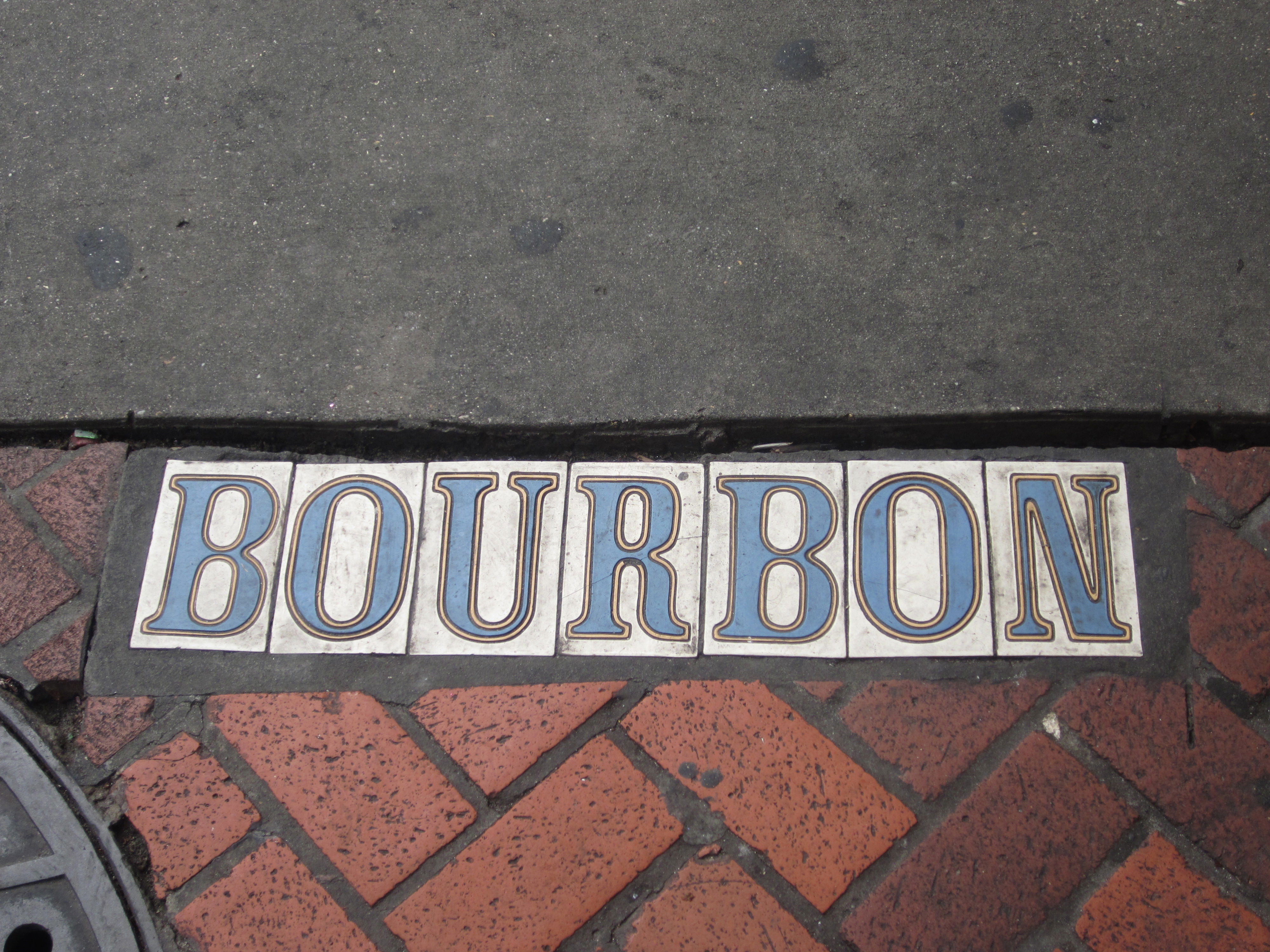
Make sure to look around and up as you traverse the network of interwoven streets to take in some of the French - Spanish architecture. Those railings and balconies on the outside of the houses actually hail from the time the Spanish controlled the city.
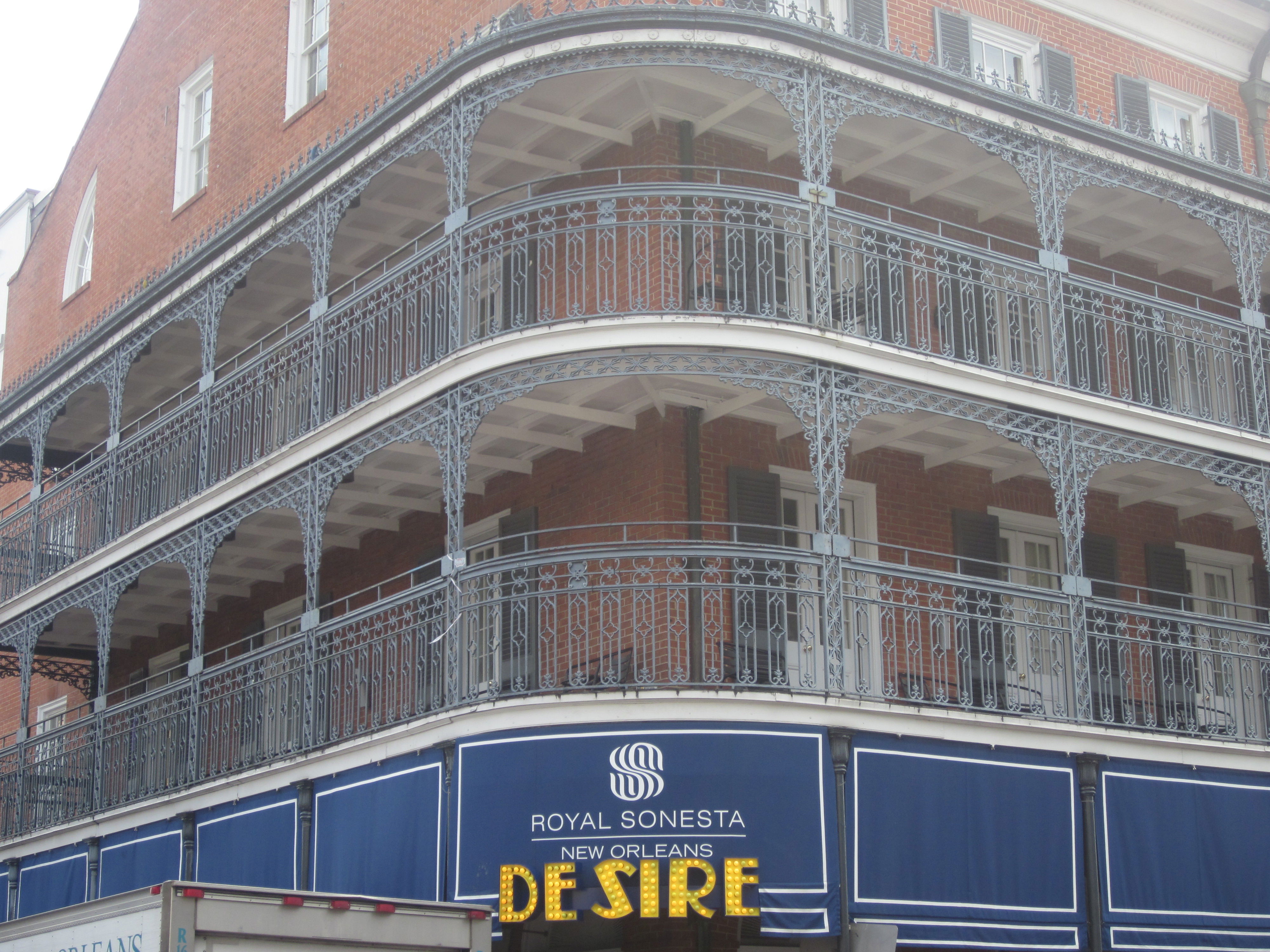
If you can, try t find the time to ride one of the three lines of street cars, modes of transport that inspired the Tennessee Williams’ masterpiece “A Streetcar named Desire”. There are two red and one green line each serving different parts of the French Quarter and the more affluent St. Charles district.
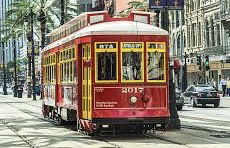
As you walk down Bourbon street, do not forget to drop into the Musical Legends Park for a beignet or glass of something cold and refreshing. A beignet is a local delicacy shaped like a square made largely from Choux pastry and also referred to as “pets-de-Nonne” or “Nun”s Fart”. The latter is certainly how we Germans know this sweet delight. What makes it so calorie laden is the fact that it is literally smothered in so much icing sugar that it would keep any hyperactive child going for a solid 24 hours!

Arguably the best beignets can be found at the Cafe Du Monde past Jackson Square, named after General Andrew Jackson along Decatur Street. Be prepared for a long wait however as queues for the local delicacy have been known to stretch for several blocks as locals and tourists alike try to get their hands on this sweet delight.

Just to the north of Jackson Square stands the Cabildo, the seat of Spanish colonial power during the period where the governor received his orders from Madrid rather than Paris.

Towards the far end of Decatur Street stands the golden statue of Jeanne d”Arc or “Joanie on a Pony” as locals affectionately refer to her. The Maid of Orleans is the patron symbol of New Orleans also and locals view her with as much affection as many do in her native France.
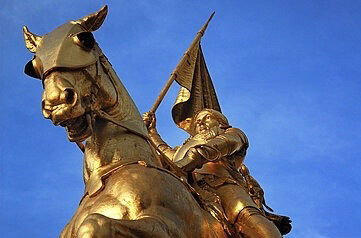
Shotgun Houses, so named because the opening to each room was directly parallel to the next, it allowed for someone to fire a shotgun from the street through the whole length of the house and hit only the target in the back yard. Shotgun Houses were also popular because in those days, house taxes were calculated according to the width of the house. These houses however while not very wide were very long and thus avoided the higher rates of tax.

One cannot speak of New Orleans without referring to the devastating Hurricane named “Katrina” which ht the city in 2005. Although the city was protected by man-made dikes and levies, the sheer category 5 force that was brought to bear on the cities defences caused 5 of the nine barriers to break and many parts of the city were flooded. This was in large part due to the fact that only few sectors of the city, including the French Quarter sit above sea level. Thousands of people saw their homes destroyed by the ensuing floods and several hundreds lost their lives when the levies broke. A memorial to those who perished can be found on a granite wall outside a hotel on Loyola Avenue, not to far from the city”s Amtrak station.
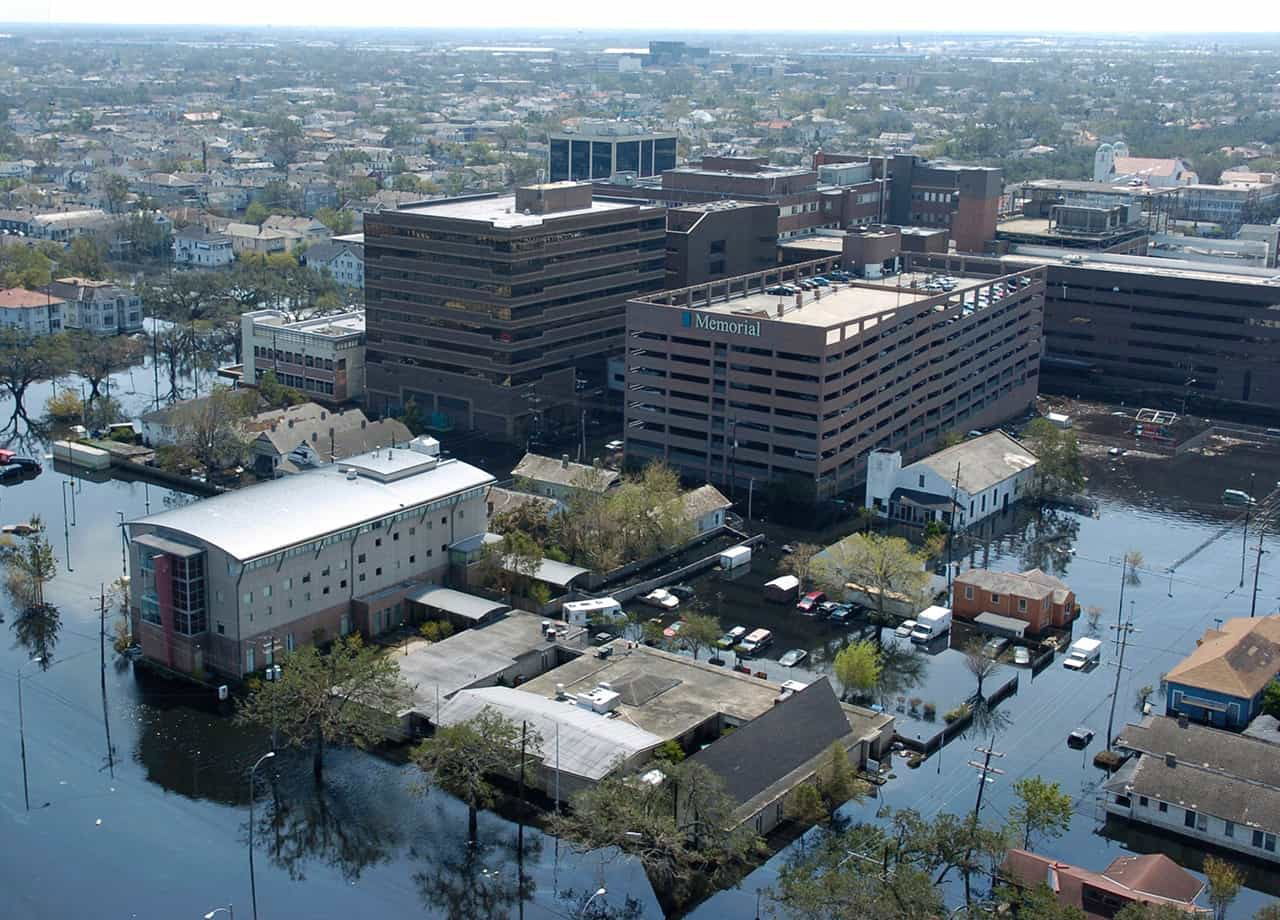
As previously stated, many cities in Louisiana like New Orleans or Baton Rouge are either surrounded or connected in some way to the network of bayous or swamp-based waterways once used by the Lafitte brothers from their pirate hideout. The word “bayou” is a bastardisation of the Choctaw Indian word “bayuk” which means “slow moving water”. Nowadays, they offer a natural habitat for a different kind of predator however and it was this marvel of creation which I had come to see for myself up close (if not too close) while I was in the area, the North American alligator.

Louisiana has over 40% of the total number of the US’s swamps, canals and waterways and its bayous are home to almost 2 million alligators. Now one would think that with this number of carnivorous reptiles, fatal encounters with humans would be both commonplace and inevitable. However, the statistics indicate that humans are more likely to die as a result of a bee sting than an encounter with an alligator. Incidentally for anyone wondering how to tell a crocodile apart from an alligator, the gator”s snout is rounded, while a croc”s is narrower and more elongated.
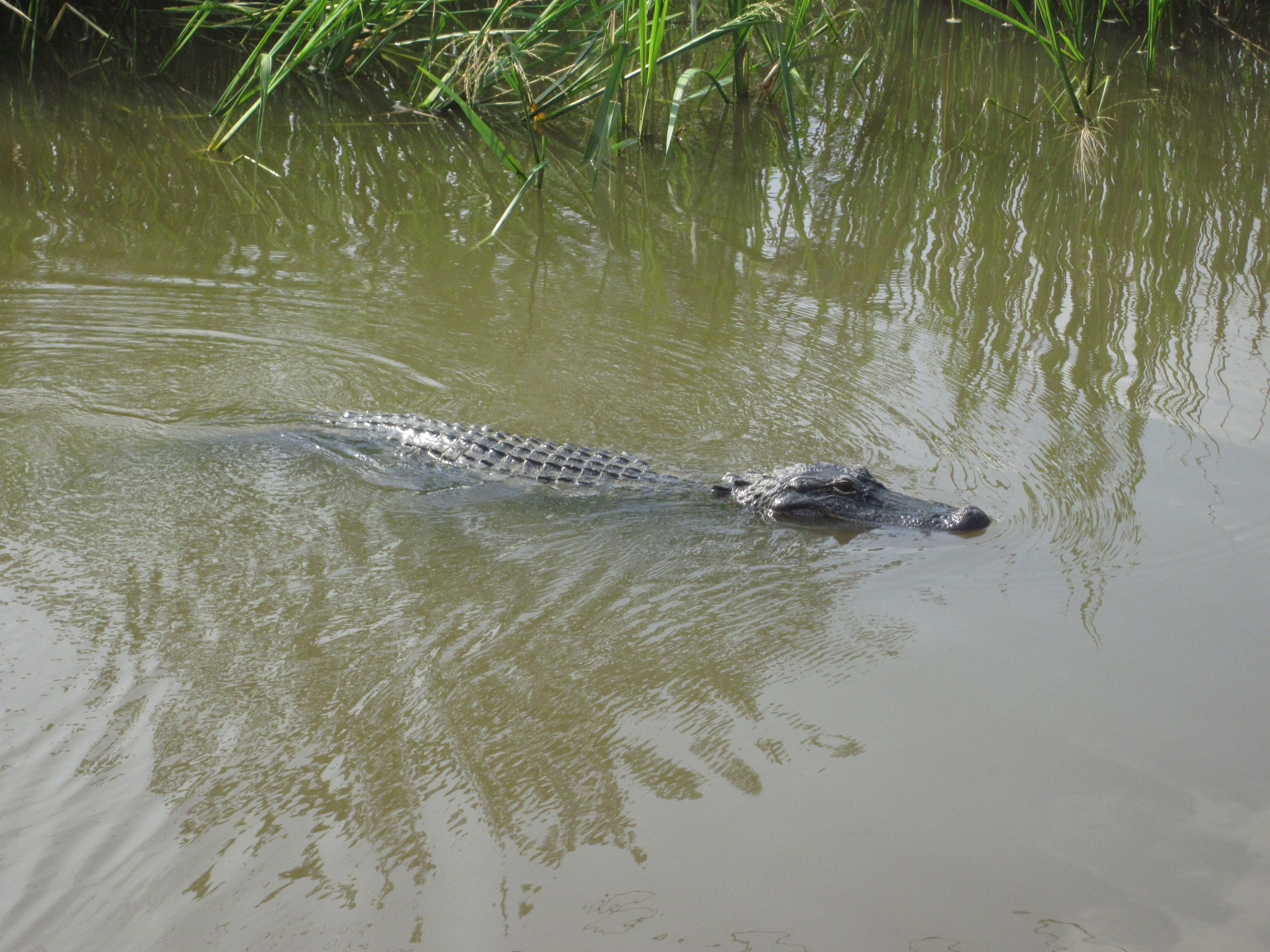
Unlike crocodiles, alligators are not naturally aggressive unless they are hungry or protecting their young. A chance encounter with one is likely to resemble a staring contest with both sides watching curiously what the other will do. In most cases, the alligator will avoid a direct confrontation and seek refuge in the murky depths of the bayou..
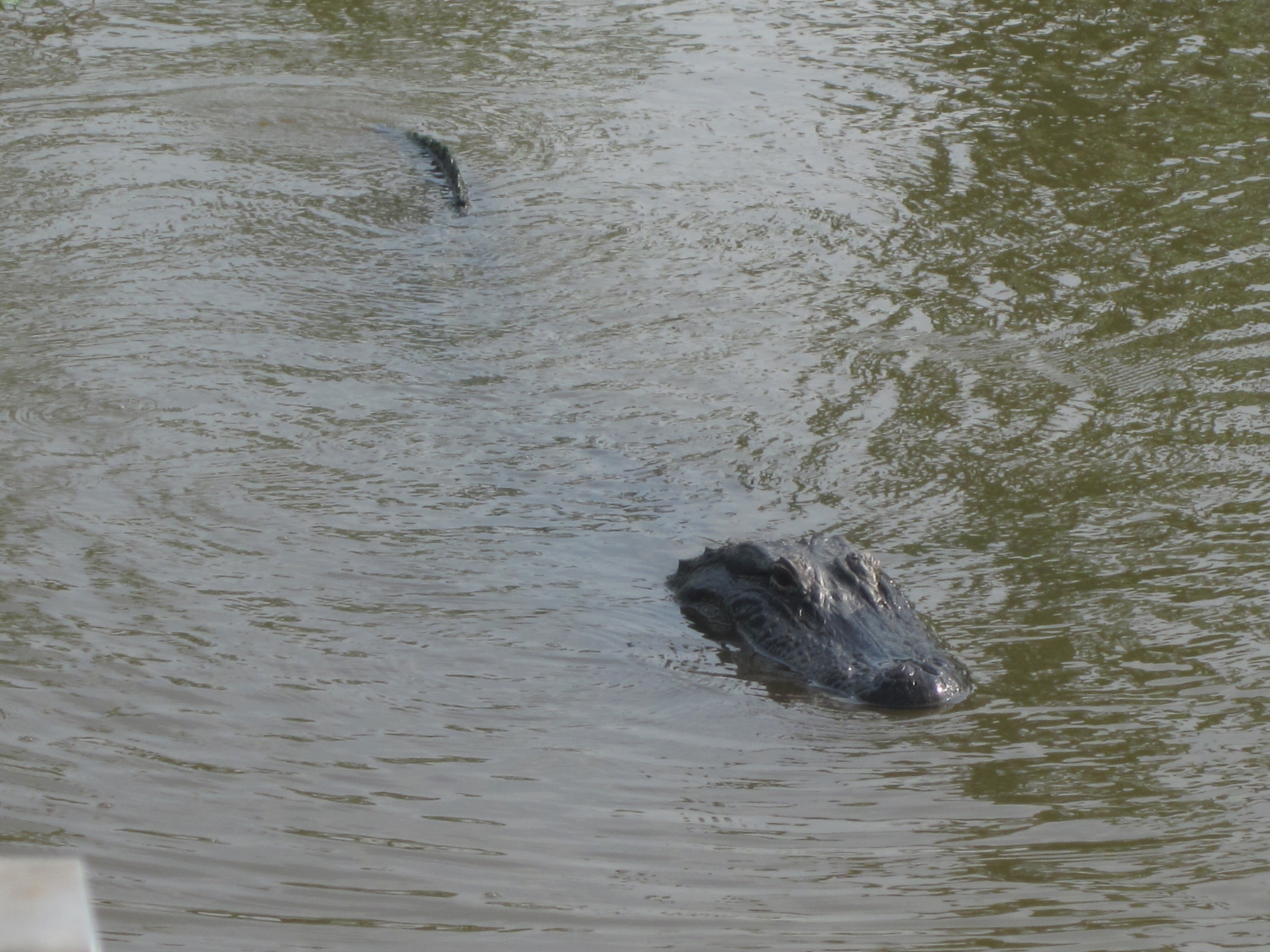
Where this is not possible, it will adopt a defensive pose until it can be sure that it is not being threatened. Our guide and swamp boat pilot Troy told us that most alligators are territorial and do not leave their habitat unless the time has come for them to seek out a mate. Even then, they try to stay close to their own hunting grounds so as not to get into any territorial disputes with a stronger rival.
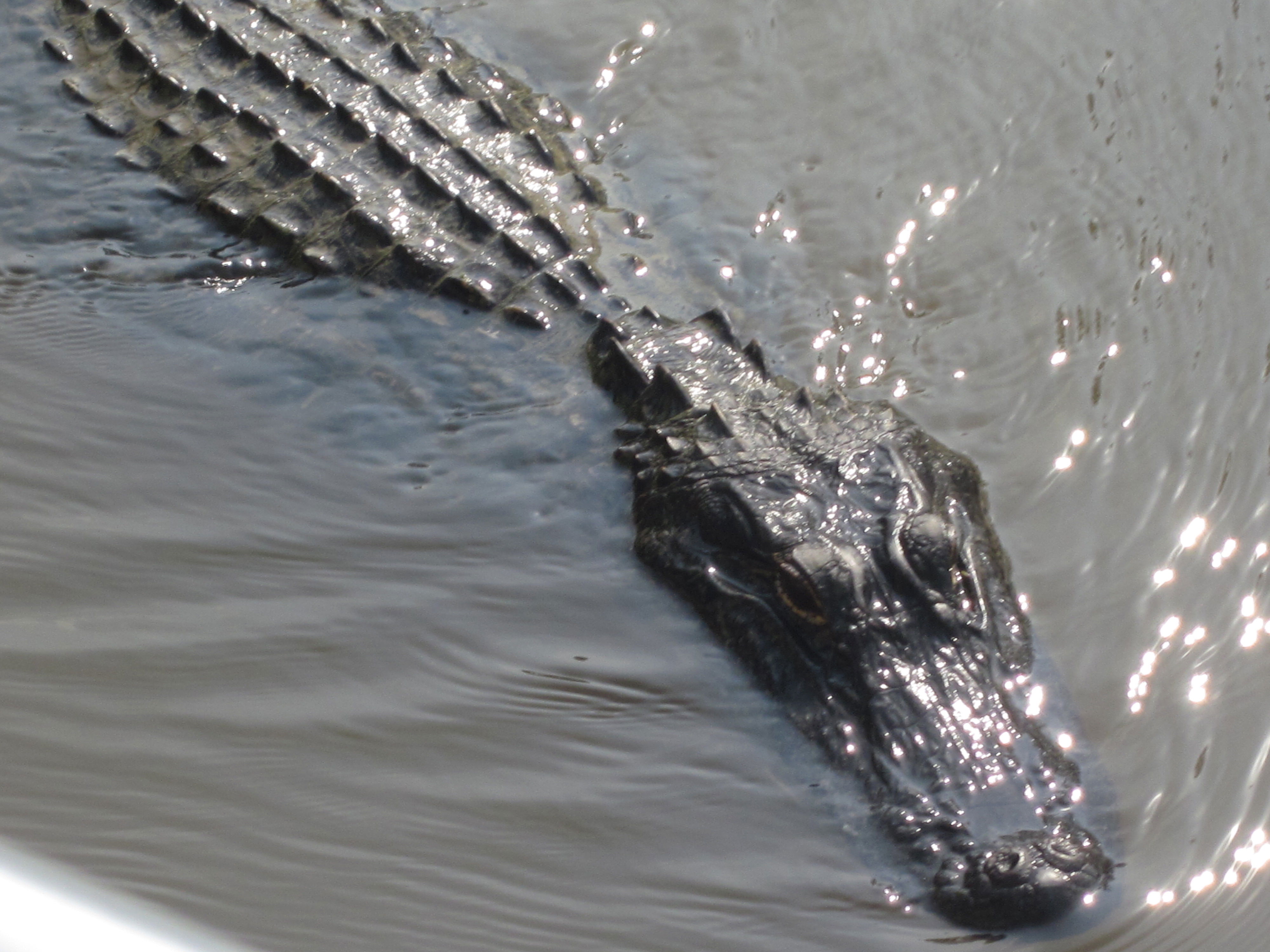
Our tour group was made up of a smattering of locals, visitors from Japan and India, as well as some out of towners from Atlanta and Fort Lauderdale, itself not unused to seeing gators in grassy areas near open stretches of water. But for the safety of the swamp boat we were on, several of the oversized reptiles showed sufficient curiosity as they approached us and eyed us extensively before deciding we were not a threat and merely “passing through” their hunting grounds. Occasionally we saw a pair of gators swimming together without showing any aggression towards one another though admittedly these were much younger males, neither or which regarded the other as a rival for a prospective female at this point in time.

While alligators do sometimes stray onto land, this is usually because the land they are on is the shortest route for them to get to a new water-based habitat. When that happens, people are advised to give the creature a wide berth and not to make an sudden or seemingly threatening movements. Remember, alligators will not attack unless they are spooked or feel that their own lives are in danger and then they will adopt the same behahiviour a human would, fight or flight! Warnings are liberally posted in or around properties that border the gators’ domain to stay clear of them during a chance encounter.
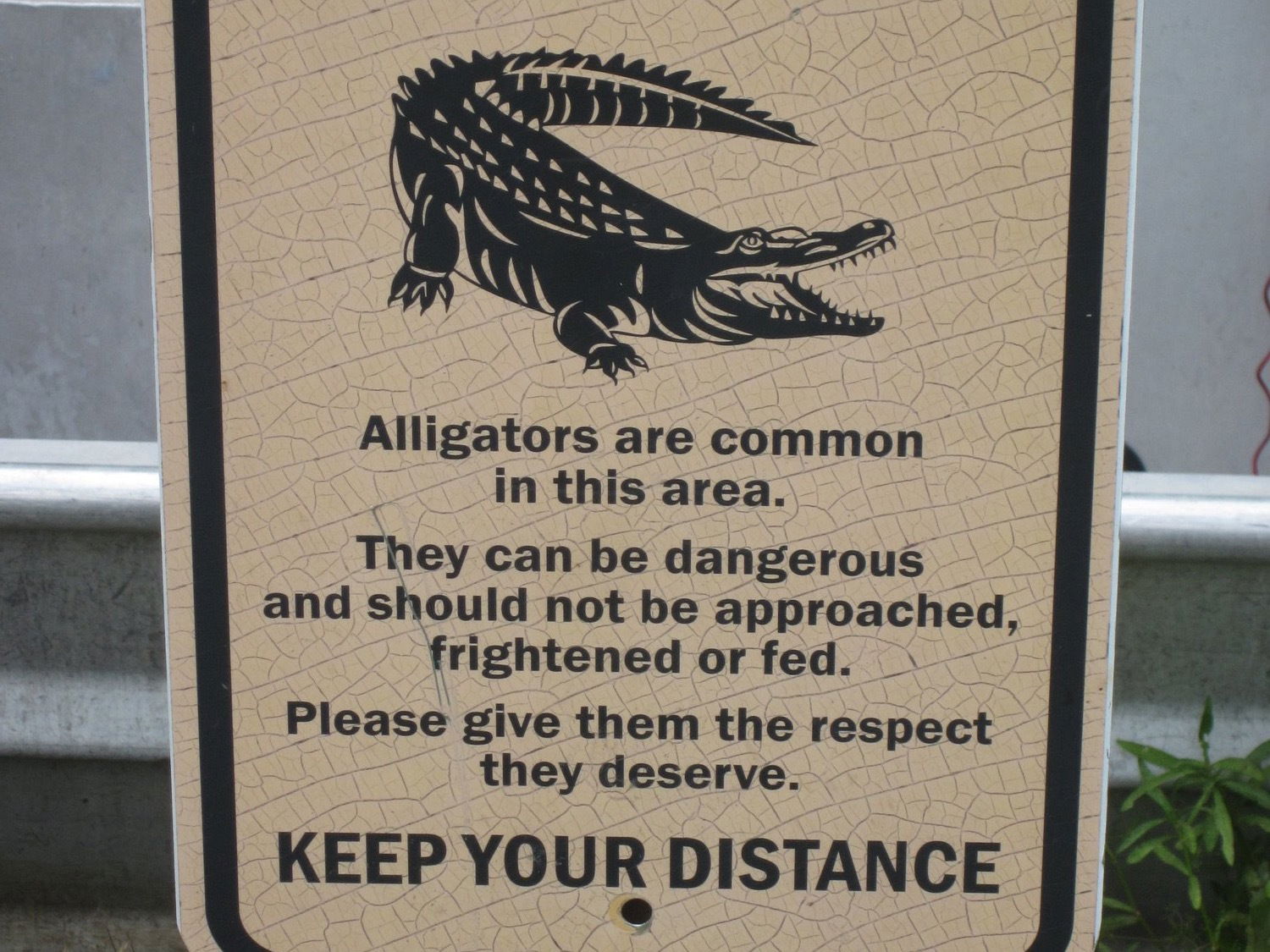
My time in New Orleans had come to an end and it was time to move on to the home of Rhythm and Blues and the birthplace of rock and roll, Memphis Tennessee, so it was time for another Amtrak ride. This one would turn out to be nothing like I had expected and for all the wrong reasons ….